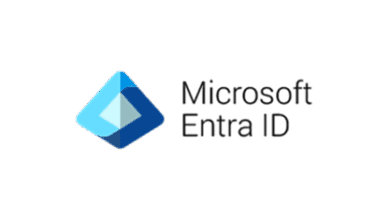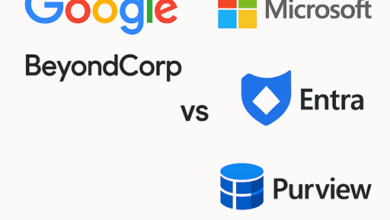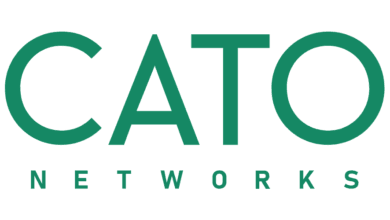Why Netskope Is Leading the Way in Cloud-First SASE Security
The shift to cloud applications and remote work has rewritten the rules of cybersecurity. Protecting users and data no longer happens at a single point on a network. Today, it has to happen everywhere—in the browser, across SaaS platforms, in public cloud environments, and on devices that might never touch the corporate LAN.
Enter Netskope, a company that has built its entire security model around this cloud-first reality. As one of the top players in the Secure Access Service Edge (SASE) space, Netskope doesn’t just bolt cloud capabilities onto legacy infrastructure—it was designed from the ground up for the modern, decentralized enterprise. And it shows.
Netskope’s SASE architecture combines multiple critical technologies into a unified, cloud-delivered platform. At the heart of it is a strong Secure Web Gateway (SWG), offering real-time inline inspection of web traffic to block malware, enforce policy, and filter risky content. Unlike traditional web gateways that rely on backhauling or proxies that slow things down, Netskope delivers this functionality through its NewEdge network—a high-performance, globally distributed private cloud optimized for security at scale.
But the real strength of Netskope lies in its deep understanding of cloud activity, particularly through its Cloud Access Security Broker (CASB). This isn’t surface-level monitoring of cloud usage; Netskope goes far beyond simple visibility to provide granular, context-aware controls over how users interact with SaaS and IaaS platforms. Whether it’s Microsoft 365, Google Workspace, Box, Zoom, or AWS, Netskope knows the app inside and out—and gives security teams the tools to govern how data moves within and between those environments.
This fine-grained control is tightly integrated with Data Loss Prevention (DLP). Netskope’s DLP engine is one of the most advanced on the market, capable of inspecting structured and unstructured data in real-time. It supports content fingerprinting, advanced pattern matching, exact data matching, and even optical character recognition for image-based data leaks. Whether you’re trying to prevent accidental data loss or malicious insider activity, Netskope allows you to write highly specific, yet flexible policies across cloud, web, email, and endpoint.
Another key piece of the SASE puzzle is Zero Trust Network Access (ZTNA), and here too, Netskope delivers. Their ZTNA service replaces legacy VPNs by enabling secure, adaptive access to private applications based on user identity, device posture, location, and risk. Access is granted on a per-application basis, which significantly reduces the attack surface. And because it’s built into the broader SASE platform, access decisions are informed by everything Netskope knows about that user’s behavior across the web and cloud.
Netskope’s inline threat protection is another area where it shines. Powered by the company’s own threat research and augmented by threat intelligence partnerships, Netskope defends against malware, ransomware, phishing, and zero-day attacks in real time. Inline sandboxing, traffic decryption, and AI-based anomaly detection work together to block threats before they reach users—even in encrypted traffic, which now represents the majority of enterprise data flows.
Behind the scenes, all of this is tied together by one of the most scalable and performant cloud infrastructures in the industry: the aforementioned NewEdge network. Unlike many vendors who depend on third-party public cloud providers for delivery, Netskope owns and operates its own backbone. That means lower latency, higher availability, and better control over how traffic is inspected and routed. It also means enterprises can rely on consistent policy enforcement and fast user experiences—no matter where in the world their teams are working from.
Managing the Netskope platform is done through a single, unified dashboard that provides visibility across all security functions—web, cloud, private access, and data protection. It’s built with the operational needs of today’s security teams in mind: intuitive, flexible, and rich in analytics. You can see not just what users are accessing, but how, from where, and whether it complies with your policies.
In many ways, Netskope’s approach to SASE is what the framework was always meant to be: security that adapts to the user, not the network. And because it’s natively cloud-delivered, it avoids the patchwork architecture that often comes with trying to stitch together products from different vendors.
Of course, no solution is without its caveats. Netskope’s power lies in its flexibility and granularity, which means it may take time and expertise to configure to perfection. It’s a platform that rewards investment—if you’re willing to spend time understanding its capabilities, you can build a security posture that’s uniquely tailored to your organization’s risk profile.
For enterprises embracing SaaS, remote work, and public cloud infrastructure, Netskope is hard to ignore. Its commitment to inline security, deep cloud visibility, and policy-based control aligns perfectly with Zero Trust principles—and its track record for innovation keeps it a step ahead in a rapidly evolving threat landscape.
As SASE adoption accelerates, the leaders will be the ones who combine speed, intelligence, and adaptability in a single service. Netskope is doing just that—and in many cases, setting the bar for what cloud-native security should look like.



